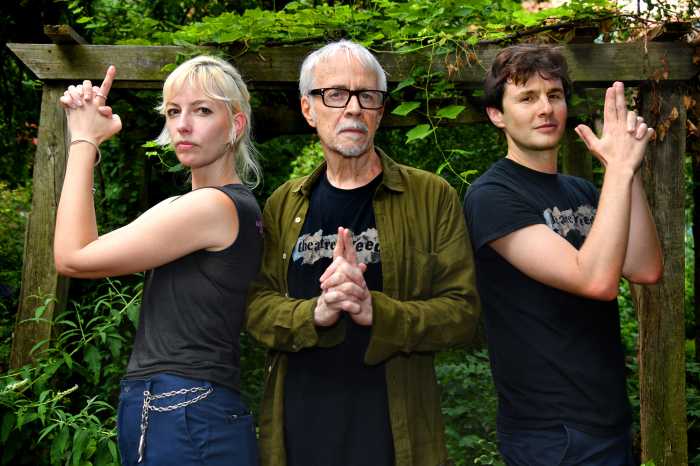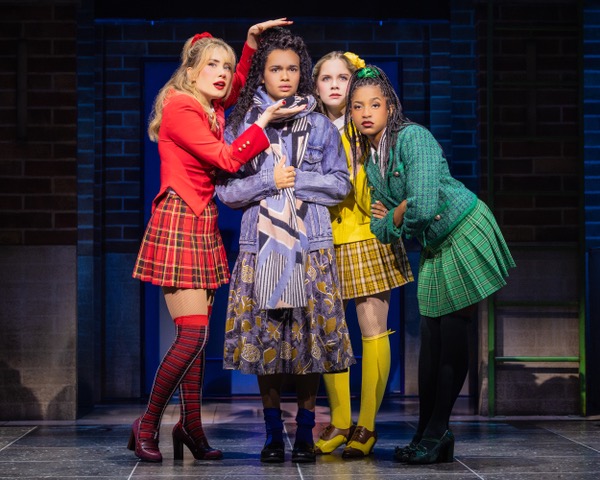In 1969, “Sesame Street” premiered on public television stations, where it become a pop cultural touchstone as well as a half-hour lesson in the ABCs and 123s.
With the show in its 45th season, Sesame Workshop has organized the exhibition, “Somebody Come and Play: 45 Years of Sesame Street Helping Kids Grow Smarter, Stronger, and Kinder,” running now through Jan. 31 at the New York Public Library for the Performing Arts, which takes a behind-the-scenes look at how the show is put together.
More than 250 items from the show’s history are on display, including such Muppets as Elmo, Oscar, Bert, Ernie and Grover, props and costumes, blueprints and sketches of the show’s New York set and original sketches of characters. Beyond the displays, which are installed at a lower, kid-friendly height, there are also interactive elements including a reading area, photo booth and chalk wall.
We spoke with curator Susie Tofte, an archivist at the Sesame Workshop, about the exhibition and the show’s impact on education.
What made ‘Sesame Street’ revolutionary when it debuted?
It seems like a simple question now, but back in 1966, ’67, [creators Joan Ganz Cooney and Lloyd Morrisett] first started to ask the question, ‘Can television be used to teach children?’ From the very beginning, it had curriculum goals based upon research. The show had really great timing — there was this need, and ‘Sesame Street’ met that need. You look at children’s television today, and there are whole networks that play 24 hours of content geared toward children.
How has the show evolved over the years?
As technology has evolved, the sets and look and feel of the show has changed. The curriculum has also evolved as research and how children learn has changed over the years. One of the turning points for the show was starting in the late 1980s, researchers began to realize that parents were putting their kids in front of ‘Sesame Street’ earlier and earlier. So they created ‘Elmo’s World’ to be geared toward a younger audience.
How has ‘Sesame Street’ expanded its reach?
Something that has changed over the years is the community engagement and the ancillary material that’s produced that’s beyond the half hour of programming on PBS. We’ve done extensive outreach with military families, producing content and tools for families to talk about when a family member is deployed or injured, helping families adjust to those transitions. We have also done a lot with healthy eating habits over the years. The Muppets are really good teachers and do a good job of communicating to kids.
What was a seminal moment on the show?
One of the really major events on the show was when the actor who played Mr. Hooper, Will Lee, passed away. Rather than the show saying, we’re going to replace him with a different actor, they decided to address the issue of death. In 1982 I don’t think any other children’s television show had tackled that. It’s a great example of the coming together of education experts and the research that goes into the show. there’s the script pages from the Mr. Hooper death show, there’s letters from some of the educational advisors on the show and you can see a clip from the actual segment.
Where does the show’s curriculum come from?
The curriculum is developed internally — we have a research department that develops the curriculum for each season. Recent seasons have had a big focus on STEM — science and technology and math concepts.
How has ‘Sesame Street’ helped kids ‘grow smarter, stronger and kinder’?
‘Sesame Street’ is never just about letters and numbers, it’s always taught how to be a good friend, how to have self-esteem, and you see that in the early curriculum documents that are on display from 1971. The curriculum wanted to teach the whole child. For example, Cookie Monster is teaching kids how to have self-control.
What’s the future look like for ‘Sesame Street’?
At the back of the gallery, there’s an iPad set up with one of our apps for ‘The Monster at the End of This Book.’ It was published in 1971 and is one of our most successful ‘Sesame Street’ books, and it’s now an app where it’s this interactive story that parents and kids can read together. That’s one example of how ‘Sesame Street’ goes beyond just television. We’re trying to meet kids wherever they are consuming media. It’s obviously a constant challenge to keep up with and figure out how kids are learning and interacting with this new media. But it’s also something that ‘Sesame Street’ has been on top of over 45 years.




































